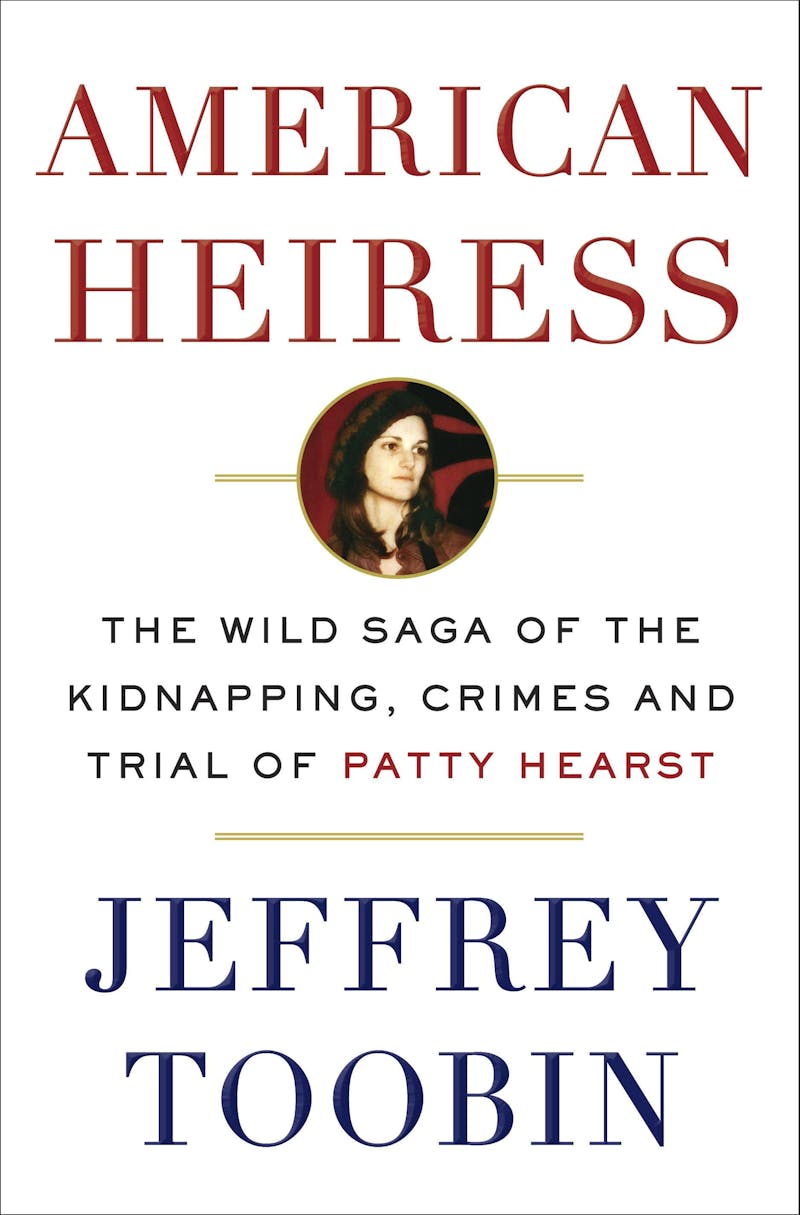In my high school psychology class, we watched a video about the 1974 Symbionese Liberation Army (SLA) kidnapping of Patricia Hearst. It wasn’t quite as popular as the video about the creation of LSD, but the Hearst movie stuck in my head. Or at least some parts of it. The class context was brainwashing, and I remember those elements: Hearst’s confinement in a closet, her drugging, her sexual assault at the hands of deranged cult leader Donald DeFreeze, her ideological programming, her flat voice on the coerced recordings. Eventually the heiress came to identify with her captors and joined them in their crime sprees, until she was captured and deprogrammed in jail.

That’s more or less the interpretation of the Hearst case history settled on. Hearst was convicted for her part in SLA activities—the jury didn’t buy “brainwashing”—but President Jimmy Carter commuted her sentence and Bill Clinton gave her a full pardon. Brainwashing and Stockholm Syndrome are now taught to high schoolers, with Hearst as example number one. But there has always been a Hearst truther contingent that believes she really became the revolutionary “Tania” and has largely evaded responsibility for her crimes.
More than 40 years after the abduction, author and New Yorker staff writer Jeffrey Toobin is trying to set the record straight with American Heiress: The Wild Saga of The Kidnapping, Crimes and Trial of Patty Hearst. She was convicted, so the title doesn’t necessarily betray a particular perspective on the events, but Toobin is convinced that Hearst’s radical conversion was genuine albeit short-lived. Reading through the evidence—or even a basic accounting of the actual events—it’s hard to disagree with him. In Toobin’s story, the kidnapping was something like the most intense study abroad trip of all time.
At the time of her taking, Patricia was still the unruly 19-year-old granddaughter of publishing magnate William Randolph Hearst. After being kicked out of a few private schools, the rebellious Patricia “made a determined play” for one of her young teachers, Steven Weed, and the two of them moved to Berkeley, California. By then her fiancé, Weed enrolled as a graduate student in philosophy at the University of California and Patricia enrolled (unenthusiastically) as an undergraduate. There’s no disputing Hearst’s situation before the SLA shows up: She was lonely, listless, vaguely suicidal, and engaged to a total fucking tool.
There is one opinion that unites everyone in the story, from the militants, to Patricia, to her family, to Toobin: Weed is a jerk. After running away with his student, he turned her into a teenage housewife, isolated from friends and family, cleaning up after him while he did philosophy. Here’s how she later described the situation: “I paid the rent, bought the furniture, bought the groceries, cooked all the meals (even while working eight hours a day and carrying a full course load), and if I wasn’t there to cook, Steve didn’t eat.” When the commando team arrived to kidnap Patricia, Weed fled from the home yelling, “Take whatever you want!”
Toobin goes so far as to place Weed at Patricia’s hinge moment. Giving an ill-advised interview to the local public television station, Weed said of his missing fiancée, “Oh, she’s pretty, you know, the prettiest of any of the Hearst daughters. But then none of them are raving beauties. She’s a bright girl, too. Not brilliant, of course, but reasonably bright. She’s a simple girl.” Weed probably didn’t imagine that Patricia was watching on television with her new friends.
Watching your boyfriend say that about you in front of a gang of militant feminists is enough to drive any young woman to a life of crime. Toobin is sympathetic and even understanding on psychological grounds. He believes that, compared to the girls’ schools and her Berkeley house, at some point being underground with the SLA became the freest time in Patricia’s young life. Based on his research and the nature of the changing story, Toobin doesn’t find the lawyer-confabulated stories about Hearst’s assault, torture, and brainwashing credible. Her voice does sound unusually flat on the recordings the SLA released, but Toobin writes that this was in fact just how she talked. It somewhat resembled the tone of Jacqueline Kennedy Onassis, Toobin writes, who was also a product of private girls’ school education. If Patricia’s voice was a product of brainwashing, it wasn’t the SLA’s work.
Whether it was a rifle at a bank robbery, a flirty schoolgirl’s smile, or the compelling narrative of a brutalized heiress, Toobin concludes that Hearst “used the tools at her disposal” at each stage in her life. Her situation was never of her choosing, and Patricia always adapted. If her relationship with the SLA’s Willy Wolfe couldn’t be considered consensual based on the context, it’s worth noting (which Toobin does not) that at 17 years old Hearst was too young under California law to consent to sex with Weed. Her relationship with her court-ordered cop bodyguard Bernard Shaw—who became her husband in 1979, two months after her release from prison—falls along similarly complicated lines.
American Heiress centers on the question of Hearst’s complicity for her part in the SLA’s robberies, general revolutionary activities, and the accidental killing of bank customer Myrna Opsahl. The conventional explanation is that Patricia was out of her mind, even if the jury didn’t buy it at the time. Toobin’s explanation is more sophisticated: Patricia Hearst’s kidnapping was one in a series of situations of which she made the best. She is no more to blame for her SLA actions than for her membership in the ruling class as a Hearst—that is to say, kind of, but not really.
Toobin doesn’t have the background to understand—never mind explain—the theoretical reasons for Patricia’s conversion or the SLA’s motivations. He calls Shulamith Firestone’s Dialectic of Sex (Patricia’s “Bible”) “dense and at times nearly incomprehensible.” And yet Toobin writes that “From DeFreeze on down, the comrades parroted Marxist lingo more than they understood it.” This is a common double-move for mainstream commentators when it comes to radicals and their texts: There’s nothing there, and they don’t understand it anyhow.
The book’s explanatory frame is psychologism. Randy Hearst has emotional restraint like “many sons of volatile fathers.” The SLA’s Mizmoon Soltysik and DeFreeze “shared something more than their radical politics—a deep loathing for their fathers.” Toobin makes much of Patricia’s relationship with her mother; “Mom should get out of her black dress, that doesn’t help at all,” she admonished her about a press conference outfit. The SLA’s rebellion took on the flavor of the times, but American Heiress sees them, charitably, as individuals struggling with their own circumstances caught up in larger cultural themes. Is that good enough?
Toobin may not have read his Marx, but the members of the SLA were not trying to explain the world or themselves. They were engaged with history. Long after anyone had held a gun to her head, Patricia researched radical feminism with Berkeley bomb-maker Wendy Yoshimura. Women were an active majority in the SLA and resulting splinter groups, and their heavily politicized lesbian relationships complicate the stereotype we have of ‘70s left-wing groups as dominated by male libidos. In the feminist study group, “Patricia was such a thoughtful participant in the discussions of female empowerment,” Toobin writes, “that the group designated her their scribe, and she occupied her days writing a manifesto of female liberation, sexual and otherwise.” Perhaps because he lacks the necessary background knowledge, Toobin is shockingly uninterested in the content of that thought beyond its category.
One of his chapters is called “Feminist bomb-making,” which Toobin seems to think is clever, but he fails to locate the SLA in historical relation to similar groups. Germany’s Red Army Faction, for example, was a concurrent left-wing revolutionary organization that followed many of the same playbooks and was similarly managed in large part by militant feminists. In her study Death in the Shape of a Young Girl: Women’s Political Violence in the RAF, Patricia Melzer argues that it’s difficult to understand violent action as feminist practice because, typically, “a feminist subject rejects violence as a patriarchal mechanism of oppression.” Instead, Melzer calls for us to understand “feminist” “not as a marker for moral, progressive politics but as a marker for—often troubling and violent—challenges to existing gender norms.” Hearst definitely had that part covered.
Psychologism doesn’t seek to explain, it explains away. That Patricia Hearst found herself as a young woman in the 1970s constantly subject to the whims of mediocre men was the basis for her politics, not an excuse for her actions. “The trial of Patty Hearst was about more than her participation in a bank robbery,” writes France Winddance Twine in Girls with Guns: Firearms, Feminism, and Militarism, “It was a proxy for a national debate that asked how affluent white girls became armed insurgents, anti-racists and anti-capitalist political dissidents. How did it happen?” At one point, it seems, that’s a question Patricia Hearst was inclined to answer.
After her arrest, Patricia had a jailhouse conversation with a high school friend, Trish Tobin. Neither of them knew they were being recorded. Hearst told Tobin she looked forward to giving a statement after the judge’s ruling on bail:
It’ll be a revolutionary feminist perspective totally, and you know I never got… I guess I’ll just tell you like, my politics are real different from back in the day.
Booked into custody, she listed her occupation as “urban guerrilla.”
Isolating her from her comrades, Hearst’s paternalistic legal team committed her to a temporary-insanity-style defense. The sympathetic local paper the Berkeley Barb called her lawyer’s strategy “a sexist lie.” In the long-term, American society traded Patricia Hearst a life outside prison for that version of the story, and for her silence on the rest. With Toobin’s book, the deal still holds. Last year, her Shih Tzu, “Rocket,” won the Toy category at the Westminster Kennel Club Dog Show.
